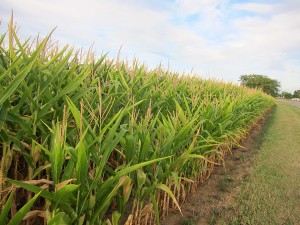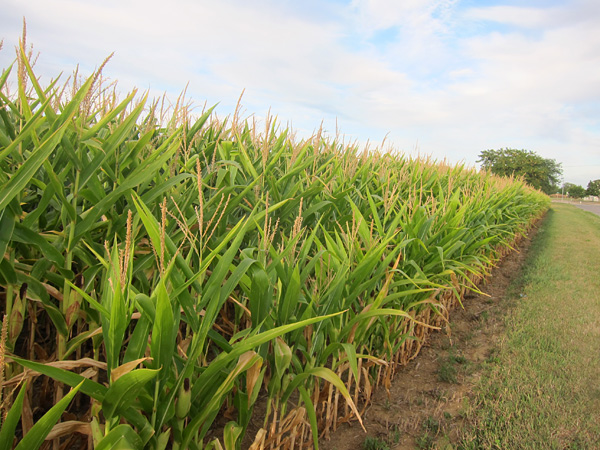
Orlan Love, CR Gazette –
Thanks in part to highly subsidized federal crop insurance, many corn and soybean farmers will make more money in this catastrophic drought year than they would have if their crops had received normal rainfall.
“You will find winners and losers as prices and yields sort themselves out,” said Tom Zacharias, president of National Crop Insurance Services, a trade group that represents the 16 private companies that provide federal crop insurance.
The winners will be the grain farmers and the insurance companies, and the losers will be the taxpayers, according to Craig Cox of Ames, a vice president of the Environmental Working Group, a leading crop insurance critic.
Much of the risk inherent in federal crop insurance, as the name implies, is borne by the federal government.
Not only do taxpayers pay more than 60 percent of the cost of insurance premiums, they also pay about $1.3 billion a year to defray administrative and operating expenses of the approved insurance providers. The government also pays a substantial portion of the indemnity payments — a portion that increases dramatically as losses mount, as they surely will during the worst grain belt drought in at least 50 years.
The total cost to the government of crop insurance was $11.3 billion last year, “and it will be substantially more than that this year,” said Cox.
Responsibility for indemnity payments is apportioned on a complex sliding scale that puts an increasing burden on the federal government when payments escalate.
In the worst case scenario — claims totaling $30 billion — the federal government would be responsible for $23 billion, according to Gary Schnitkey, an agricultural economist at the University of Illinois.
Cox said the system is set up so it would be hard for the insurance companies to lose money.
“Everyone is pretty well served by it except taxpayers,” said Bruce Babcock, an agricultural economist at Iowa State University in Ames and the author of a 2011 report for the Environmental Working Group titled “The Revenue Insurance Boondoggle: A taxpayer-paid Windfall for Industry.”
Even taxpayers are well served, according to Zacharias, who said the system provides the financial stability farmers need to bounce back from a disaster, assuring their ability to provide food security.
‘Better off with a crop’
To critics who contend that crop insurance has provided a windfall for corn and soybean producers, Zacharias said he knows many farmers who prayed for rain this year but none who prayed for drought.
Farmers “may be getting paid better than someone else thinks they should, but the (crop insurance) program is working exactly the way it was intended,” said Art Barnaby Jr., a farm economist and risk management expert at Kansas State University in Manhattan.
“You are always better off with a crop than without one,” Barnaby said.
There are exceptions to that statement, according to Babcock, Cox and Schnitkey.
Asked if some farmers who lost much of their corn crop to the drought will actually make more money than they would have under normal rainfall conditions, Schnitkey said, “That could happen.”
“They would have to have a high level of loss, revenue-protection insurance and not done much forward marketing,” he said.
Revenue protection
The introduction of revenue protection insurance, which now covers 80 percent of the nation’s insured acreage, results in windfall profits for farmers, Cox said.
Revenue protection crop insurance, which has become the industry standard, provides coverage against lost revenues caused by low yields, low prices or both.
Though the system itself is complicated, its revenue guarantee formula is fairly simple: The farmer’s average production history (measured in bushels per acre) is multiplied by the price of the crop and by the coverage level, which can range from 50 to 85 percent, with 80 percent the standard in the grain belt.
The formula uses the higher of the projected price, which protects farmers from falling prices during the growing season, or the harvest price, which enables them to reap the benefits of rising prices during the growing season — the situation that prevailed this year.
The projected corn price, based on the February average of December new-crop futures prices, was $5.68 per bushel this year.
The harvest price, established by averaging the new crop futures price during October, has yet to be determined but will likely be well over $8.
Last year, federal crop insurance paid out a record $10.8 billion. This year’s indemnity payments, though far from determined, will range from $20 billion to as much as $30 billion, according to both Cox and Schnitkey.
Barnaby, the Kansas State risk management expert, said he is estimating a $15 billion underwriting loss, which is indemnity payments (in the neighborhood of $26 billion) minus premium payments (in the neighborhood of $10.7 billion).
Farmers paid about $4 billion in premiums, with taxpayers paying the other $6.7 billion, Barnaby said.
Schnitkey said farmers who benefit disproportionately are not gaming the system.
“It is a quirk of the system,” he said, that farmers who planted corn with expectations of $5 per bushel will likely be paid more than $8 a bushel for corn they didn’t grow.
Schnitkey said there is no danger that any of the 16 approved crop insurance providers will be unable to meet their financial obligations.
High profits seen
Even without crop insurance proceeds, farmers who managed to raise a respectable crop will do well this year, Babcock said.
“Profits to the corn sector will be high,” despite the drought, he said.
Projections of a 25 percent yield reduction have pushed corn prices up roughly 50 percent, primarily because the nation’s corn supply has fallen to perilously low levels. Accordingly, the value of the 2012 corn crop, shrunken as it has been by the drought, is 25 percent higher than it would have been had normal growing conditions prevailed, Babcock said.
“U.S. corn farmers will make more money” than they would have made with normal weather and yields. “Then add crop insurance on top of that,” he said.
Lower projection
In May, the U.S. Department of Agriculture projected record corn production of 14.8 billion bushels, with a record average yield of 166 bushels per acre. In its Aug. 10 assessment, the USDA forecast national corn production at 10.8 billion bushels, down 27 percent from the May projection and down 13 percent from the preceding year. The USDA pegged the average yield at 123.4 bushels per acre.
The report said corn prices could reach $8.90 per bushel, well above planting season projections in the $5 range.
A more recent Pro Farmer survey pegged the U.S. corn crop at 10.478 billion bushels, with an average yield of 120.25 bushels per acre.
The latest U.S., Drought Monitor, issued Thursday, said a wetter, cooler pattern in the Midwest has provided relief that came too late for most row crops.








Here’s a cool site if you want to see how much individual farmers in this area collect from the federal government.
Just plug in your zip code:
http://farm.ewg.org/index.php
Welfare farming.
And they’ll scream to high heavens about the welfare state.
There is something really wrong when the taxpayers have to bail out a bunch on rich people. What ever happened to risking your own money to make (or lose) money. Such a deal where you can’t lose and get the opportunity to bitch and complain all the time. And, of course they get to go to Florida or somewhere else warm in the winter because they don’t raise livestock anymore because there isn’t enough money in it.
I went to Sioux City this weekend. I saw fields and fields of corn stalks that had no leaves and no ears. It was horrible. Can you imagine working for a year and not getting a paycheck and not getting unemployment? Think about it. You’d be crying for government help as well.
Not with the millions they make every other year.
If they can’t manage thier money in good years too prepare for the bad years then they shouldn’t be in this business. Everyone has a problem helping poor people but we should give money to people that own ground that is worth millions of dollars. If they don’t have money then sell that ground. Reminds of the the story about the lady that won the lottery but was still on state assistance claiming she had alot of bills!
socialist
“Craig Cox of Ames, a vice president of the Environmental Working Group, a leading crop insurance critic.”
I wish the reporters of articles like this would examine who their sources are.
Mr. Cox is a member of an organization who’s ties and collaborations with groups such as Sea Shepherd Conservation Society, Greenpeace, Sierra Club, Iowa Citizens for Community Improvement, Tides Foundation, The Humane Society of the United States, Center for Science in the Public Interest, and the Center for Food Safety. They make millions spreading disinformation, liberal use of scare tactics.
The staff of the Environmental Working Group reads as a “who’s who” of the extreme left environmental nuts (mostly former lobbyists) and anti-consumerist activists as well as anticapitalists.
What is shocking is that there is no direct connection to PETA (they share work with some of the same groups supporting PETA).
Their main goal is to have everyone use only organic foods.
More debt and borrow money from China!
They have polluted our waterways with there hog and cattle crap. At the same time making thousands of dollars. And were the ones that have to live with it. Not to mention the smell. Been down the Miller blacktop lately. Something really stinks here. Must be the the pesticides there spaying on them. So they can spend there summers up north at there cabins. I bet them lakes and rivers don’t stink. While there cheap Illegal labor tend to the livestock.
Townies ^
We’re called taxpayers. Ya’ know, the ones who buy you all the shiny 4WD dually pickups, and bail your asses out everytime we don’t have a bumper crop, and pay for all your subsidy checks (farmer welfare).
looks like the 4th grade was difficult for someone…
Every business in this state goes belly up without the farmer coming in their door! Think about that before you make ignorant comments against them. Therealfred , you haven’t bought a damn thing for any farmer! If you actually worked somewhere you would appreciate the business the American farmer gives you.
REALLY, When you own something worth millions you shouldn’t get a dime from the government. I guess we shouldn’t complain about the poor keeping busineses open spending thier welfare checks. where in the definition of capitolism does it say the government bails you out. Corporate welfare is still welfare.